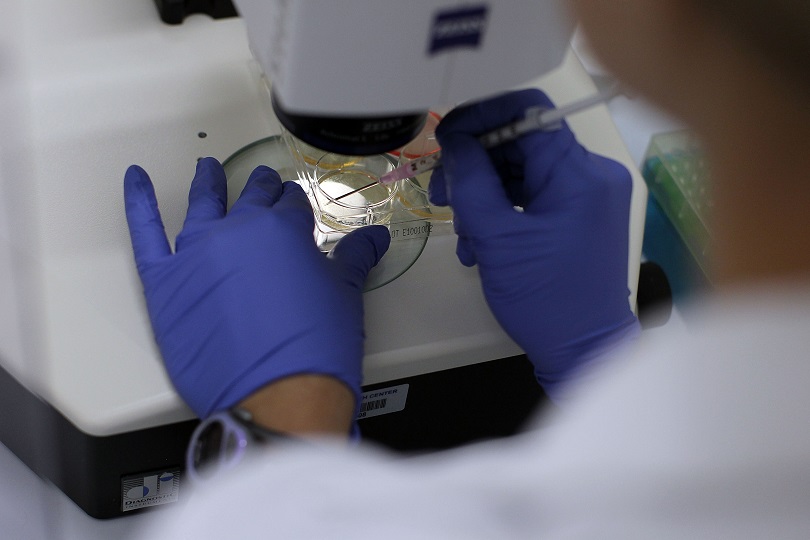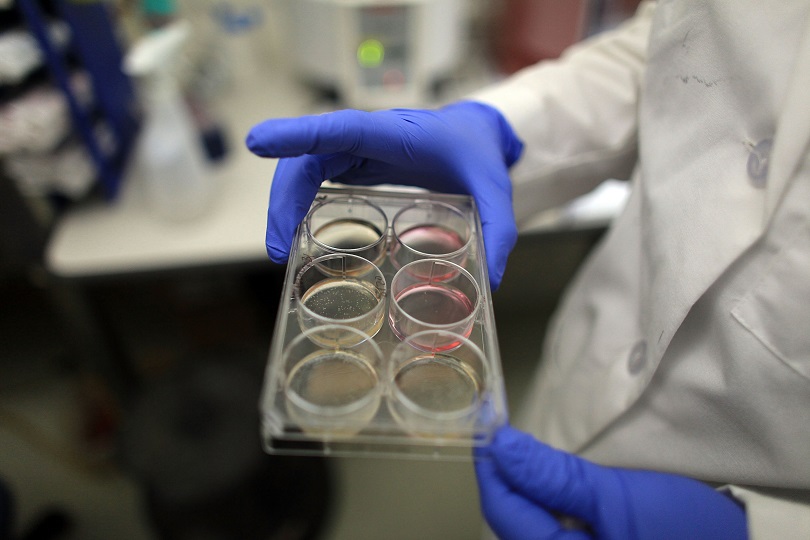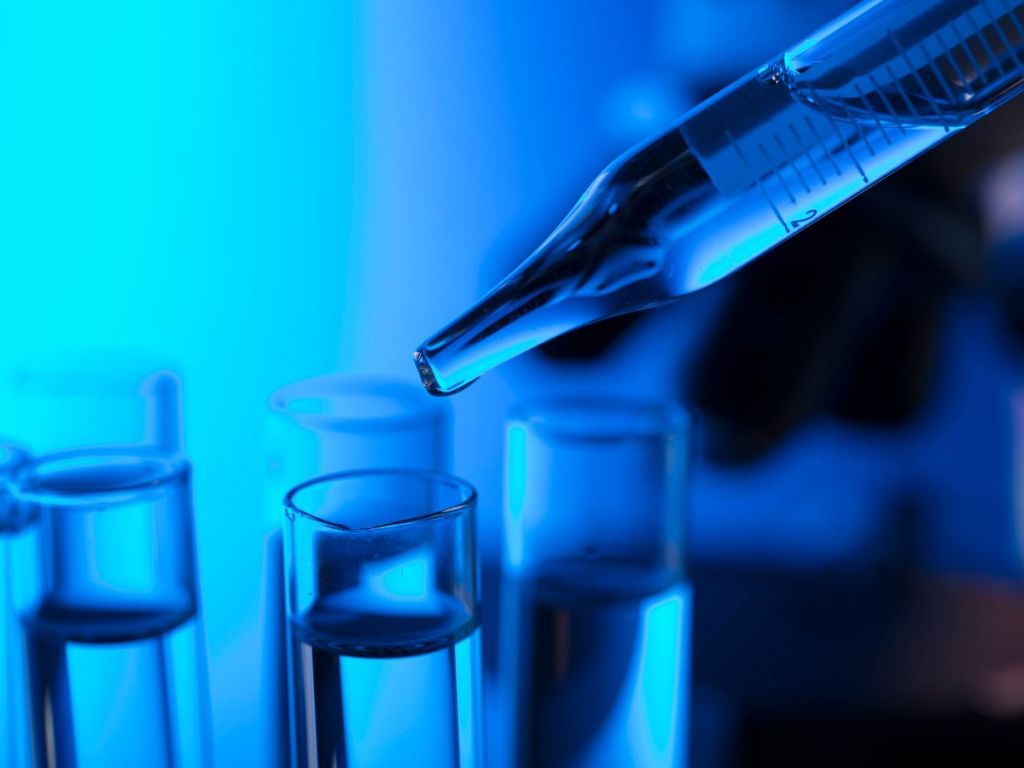What is age-reversal technology? Can we utilise technology and live forever? What is tech doing to advance our health practices? Here is your guide to how technological innovation is reversing the ageing process.
The definition of ageing
Here are some key terms to know before we explain age-reversal technology.
The ageing process
Scientists define ageing as the progressive, time-related deterioration of physiological functions necessary for survival and reproduction. This process of growing old is defined in biology as senescence, whereby a cell ages and permanently stops dividing but doesn’t die.
Lifespan
The maximum number of years a person can be expected to live, defined by the phases of juvenile, maturity, adulthood and senescence and finally, death. Evidence-based research shows that lifespan is influenced by genetics and lifestyle/environment.
Healthspan
The number of healthy years of your life unimpeded by serious disease and negative health impacts are increasingly being used to measure effectiveness of reverse ageing studies.
Life expectancy
An estimate/average number of years a population group or a person can expect to live.
Chronological age vs biological age
Chronological age is the years you have been alive, while biological age is how old your body appears according to your biochemistry metrics.
Reverse ageing and age reversal vs anti-ageing
Anti-ageing is a term used for a product or technique that is designed to prevent or lessen the appearance of getting older – think skin creams and botox. Reverse ageing or age reversal is the collection of practices, therapies and processes that reverse the physiological ageing processes to make an old organism young again.
Ageing research
The study of practices that investigate the biological intricacies of growing older – a growing industry thanks to technology.
Diseases ageing vs healthy ageing
Diseases ageing includes impacts from age-related diseases, such as neurodegenerative diseases, cardiovascular diseases, cancer, immune system disorders, and musculoskeletal disorders. Healthy ageing means living a life free from the impact of disease, for longer.
Age-reversal technology: Helpful Medical Terms
Stem cells
Found in most parts of the body, stem cells are the only human cells that can develop into many different cell types such as blood, bone and muscle cells and that can repair damaged tissue.

Yamanaka factors
Awarded the 2012 Nobel Prize for Physiology or Medicine, Yamanaka Factors or OSKM proteins (Oct3/4, Sox2, Klf4, and c-My) can cellularly reprogram old/adult cells into very young/immature cells.
Skin cells
These cells are the building blocks of the skin, which is our largest organ and provides our external protective covering.
Heart / cardiovascular disease
This embodies a number of specific chronic conditions of the heart and circulatory system including heart disease, stroke and blood vessel disease.
Clinical trials
Documented studies that researchers use to test a medical, surgical, or behavioural intervention in people to determine its safety and efficacy.
Age-reversal technology: Dr David Sinclair
Dr Sinclair is a Professor of Genetics and Co-Director of the Paul F. Glenn Center for Biology of Ageing Research at Harvard Medical School. He and his colleagues recently published a study that identified the hallmarks of ageing and how manipulating these can reverse or speed up ageing.
Age-reversal technology: What is reverse ageing?
Reverse ageing is the collection of practices, therapies and processes that reverse the physiological ageing processes to make an old organism young again.
Turning back, rather than just stopping the clock, is big business. Estimated to be worth $610bn by 2025, evidence-based, reverse ageing technology designed to increase your lifespan and healthspan while delaying and preventing ageing is pushing researchers and scientists to create huge genomic breakthroughs.
It is also driving some people, such as 45-year-old biotech entrepreneur Bryan Johnson, to spend around $2million per year to reverse his ageing through an intricate regime of medications, health specialists (over 30 at last count) and dietary requirements.
Is it working? According to this Bloomberg profile, Johnson claims that recent tests suggested his heart was like a 37-year-old’s, his skin looked 28, and his lungs were like a teenager’s – all much younger than his chronological age.
Very few of us have this or any budget to invest in reverse ageing, but the lure to stay looking and feeling young is in huge demand.
Why are so many tech companies trying to reverse your age?
There are collective and individual reasons for the growth of age-reversal technology. According to the International Money Fund, an ageing population slows GDP; it puts pressure on working-age people to pay more to support the elderly; and it strains public budgets through higher costs of health and retirement programs.
In short, ageing equals disease. As we age, we increase our risks of serious diseases that compound and exponentially fast-track the ageing process, while reducing our lifespan and healthspan. From cancer, to type two diabetes, heart disease, to dementia, and so on. In general, age is the highest risk factor for these diseases, so the motivation to end the pain and suffering they cause is understandable.
For others, the drive to reverse ageing is a quest to outlive death. The proliferation of startups in Silicon Valley that want to directly challenge the ageing process and engineer immortality demonstrates the commitment to reverse ageing on a global scale.
Companies such as Altos Labs, started by technology entrepreneur Yuri Milner and reportedly also supported by former Amazon founder Jeff Bezos, are vigorously pursuing reverse-ageing solutions by funding leading scientists. Calico Labs was formed in 2013 with Google founders Larry Page and Sergey Brin in support. Calico Labs is developing interventions that enable people to live longer and healthier lives by researching the biology that controls ageing and lifespan.
Startups such as AgeX Therapeutics, Life Biosciences, Shift Bioscience and Turn Biotechnologies in the UK are also exploring and developing reprogramming technology, which is one of the dominant ways that companies are seeking to reverse the ageing process.
Age-reversal technology: Ways to reverse ageing
There are many methods being explored to reverse ageing. Below we explain the three most prominent breakthrough technologies.
Age-reversal technology: Stem cell reprogramming
Stem cell research and technology is one of the leading ways that scientists are hoping to reverse ageing, based on the stem cell theory of ageing. This theory claims that the ageing process results when various types of resident tissue stem cells are unable to replenish the tissues of an organism with functional differentiated cells; making it incapable of maintaining that tissue’s original function. With function restored, the stem cells reverse the ageing process.
Recent lab studies in 2023 at the University of Buffalo showed that ageing was a reversible process. Chemical engineer Stelios Andreadis showed that the embryonic gene NANOG could reprogram senescent (aged) adult stem cells and skeletal muscle cells, thereby reversing the hallmarks of ageing.

Reprogramming Ageing Cells was also proven in 2016, when Salk Institute for Biological Studies in California researchers reprogrammed the cells of ageing mice using induced pluripotent (able to self-renew) stem cells. These researchers found that the mice whose cells had been reprogrammed lived 30% longer than the non-reprogrammed control group. While risks for this technology remain too high for human trials, the study results have provided interesting data on the use of stem cells in anti-ageing and reverse ageing efforts.
Excitingly, scientists are also reprogramming skin cells to act like stem cells. Those cells, called induced pluripotent stem cells (IPSCs), are being extensively studied to check their safety, but since they can be generated from any healthy person or patient, IPSCs are now regarded as a valuable resource for regenerative medicine to replace diseased or damaged tissues.
Age-reversal technology: Understanding DNA mutations
Dr David Sinclair and his research colleagues at Harvard Medical School identified the hallmarks of ageing through DNA mutations and how epigenetic reprogramming can drive age forwards or backwards. Published in Cell, Sinclair and his team’s findings show that by manipulating the epigenome, they can age mice on an accelerated timeline. Excitingly, they can also reverse the ageing effects and restore some biological youth to them. The team argues that these reversibility results demonstrate that the drivers to ageing aren’t DNA mutations, but rather are cellular responses to double-stranded DNA breaks that erode the epigenetic landscape.
The age reversal results for the mice came in the form of a gene therapy involving three genes from a suite of Yamanaka Factors to instruct the cells of the kidneys and skin cells to reprogram themselves. Sinclair and his team didn’t want to completely erase the epigenetic history of the cells, but sought to reboot them enough to reset their epigenetic instructions. Using three of the four Yamanaka stem cell factors turned back the clock about 57%, enough to make the mice youthful again.
Sinclair’s perspective is that ageing is the result of losing critical instructions that cells need to continue functioning, rather than just the accumulation of damage over time. So, restoring and improving cell function by understanding DNA mutations and reprogramming is his answer to age reversal. Testing in human trials is a long way off.
Age-reversal technology: Protein isolation
Elevian is founded by Dr Mark Allen, a physician and entrepreneur and a team of Harvard scientists who believe that a single protein called growth differentiation factor 11 (GDF11) could influence regenerative medicine to treat and prevent many ageing-related diseases. Their initial focus is on recovery treatment for strokes.
The theory behind their research is that the GDF11 protein changes with age, but if injected into an older organism from a younger one, the younger protein improved the functionality of the older protein. When Elevian team members attached the circulatory systems of young mice to old ones, they found strong evidence of a biological reversal of many characteristics of ageing. Likewise, the younger animals aged faster when injected with older protein.
The company is developing GDF11 into a recombinant protein called rGDF11 to promote neovascularization (new blood vessel formation), stimulate neurogenesis (new neuron formation), and reduce inflammation. Beyond benefits to help repair damage caused by stroke, rGDF11 has been shown to promote the recovery and regeneration in several preclinical models of ageing-related diseases, including cardiovascular/heart and other disease.
Other reverse-ageing technologies currently being explored include crafting reversalogues to encourage cell division, which is based on research showing that splicing factors in cells become inactive with age; using pre-existing drugs in new combinations and injecting them to possibly extend lifespan and postpone age-related health issues; using young blood injected into older people, such as Bryan Johnson using his son’s 17 year-old blood, to reverse the ageing effects; synthetic peptides and more.
Age-Reversal Technology: The challenges
Apart from Bryan Johnson, who is publicly showcasing the programming and experimental treatments he is undergoing in the pursuit of age reversal, many of the scientific and technological efforts being explored by these companies have not yet yielded treatments tested on humans in clinical trials.
The reasons for this are safety-based. While testing is currently done on animals, and results in mice undergoing stem cell reprogramming have shown promise, scientists have not yet been able to modify reprogramming to see if it can safely rejuvenate animals without killing them.
A major issue is that the reprogramming technology doesn’t just make cells act younger or differently. Reprogramming changes a cell’s identity, such as transforming a skin cell into a stem cell. These modifications have resulted in cancerous growths in some animals and other dangerous outcomes, making the technology too great a risk for human clinical trials at this stage.
Another barrier is whether the process can be carried out using ordinary drugs, rather than via genetic engineering. And if drugs do become the literal magic pills to reverse ageing, questions abound around how they monitored and measured as part of the approval process by international and federal drug agencies. Ageing is not currently defined as a disease, so the parameters for where and when diagnosis and treatment to start the ageing reversal process begin would need robust debate and tight control.
Age reversal technology future
Age reversal technology is set to become a big deal. There are many leading researchers and companies spearheading the latest technological breakthroughs in age reversal technology, so the rate of new discovery is likely to increase rapidly in the next few years. The largest challenge remains human clinical trials due to the huge risks associated with testing the latest findings.





